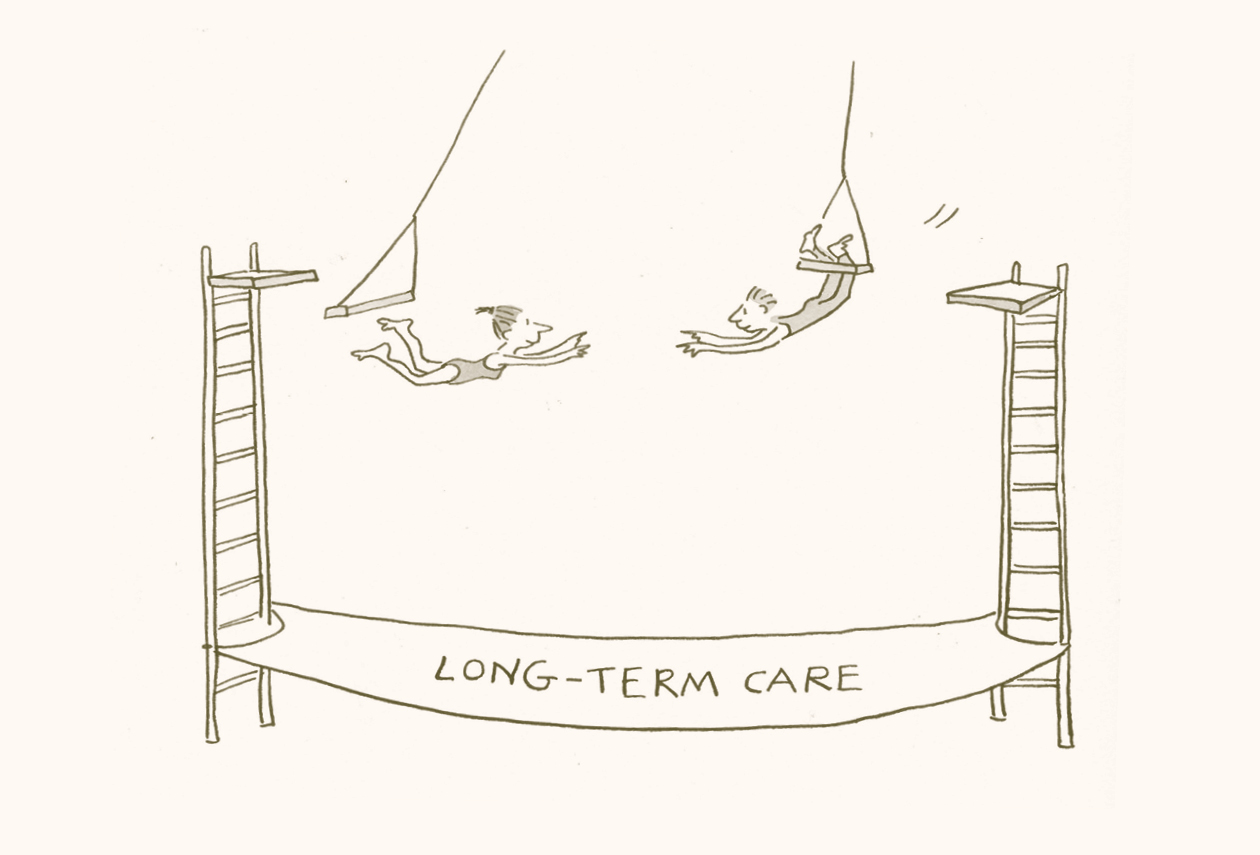Most people understand the importance of insuring their home or car, buying a life insurance policy to protect their family’s financial future, and having comprehensive health insurance to prevent being stuck with huge medical bills. Insurance provides both emotional assurance and the practical financial backing to recover from emergency setbacks.
However, there’s one type of insurance that is too often overlooked but can be just as critical—long-term care insurance.
Long-term care insurance is exactly what it sounds like: It kicks in when you are unable to live independently on your own, whether from a condition or disease, accident or trauma, or overall declining health as you age. Many people have the misconception that their health insurance or Medicare will cover all of the costs associated with these scenarios, but that isn’t the case. Most costs for living in a care facility or assisted living, nursing, therapy and other assistive care needs are typically not covered by standard health insurance or Medicare. Without LTC insurance, these expenditures can present an unexpected cost and subsequently a risk to your family’s financial goals.
The average stay in an LTC facility for those who need it is between two and three years, but for some conditions, such as Alzheimer’s or Parkinson’s, the need for LTC could go on much longer.1 And if you don’t have LTC insurance prior to being admitted to such a facility, it’s often too late to get it. Thus, discussions about whether to buy this insurance and at what level should be an important part of your financial planning process once you reach your 50s, if not sooner. There are two main types of LTC insurance: traditional and hybrid. Under traditional plans, you’ll pay regular premiums until you need to use it, at which time claim benefits will be paid. However, if you end up not needing to use the insurance, you lose any economic benefit of having it. A hybrid plan works differently. A policyholder would buy it under a specific term, and the premiums don’t adjust. And, if the insurance is never used, it converts into a life insurance benefit, so the money put into the premiums isn’t completely lost. The costs of both types of insurance can vary widely based on a number of factors, including age, health, family history, cost of living adjustments and the amount of coverage you need.
So how do you determine whether to buy LTC insurance in the first place and the type of policy you should purchase? Your advisor can help with an individualized analysis, exploring all options and partnering with an LTC insurance broker if needed. And they can weigh the potential blow to your assets of needing long-term care against the impact on your financial plan from the costs of carrying an LTC insurance policy.
For example, if there is a family history of dementia or extended care, an individual may want to be more cautious and purchase the plan. However, if they have the ability to self-fund long-term care and the cost of insurance may cut into the building of those assets now, then forgoing the insurance or buying a policy that covers less might make sense.
In addition, your advisor can take into account other factors, such as the viability of assets to cover long-term care expenses, any multigenerational goals one has for passing assets along, whether there is a significant age gap between spouses that might make one more likely to end up needing care, the history of longevity in the family that might impact how many years LTC might need to be funded, and the individual’s risk tolerance. Using all of these data points can help individuals arrive at a plan that works best for their situation.
Just like any type of insurance, there are no one-size-fits-all solutions, and it is something everyone hopes to never need. But it may be able to combat a major risk to your financial well-being and give you and your family peace of mind, addressing both emotional and practical needs.
- https://www.aplaceformom.com/caregiver-resources/articles/average-stay-in-memory-care
The opinions and analyses expressed in this communication are based on RMB Capital’s research and professional experience and are expressed as of the mailing date of this communication. Certain information expressed represents an assessment at a specific point in time and is not intended to be a forecast or guarantee of future results, nor is it intended to speak to any future time periods. RMB Capital makes no warranty or representation, express or implied, nor does RMB Capital accept any liability, with respect to the information and data set forth herein, and RMB Capital specifically disclaims any duty to update any of the information and data contained in this communication. The information and data in this communication do not constitute legal, tax, accounting, investment, or other professional advice. An investment cannot be made directly in an index. The index data assumes reinvestment of all income and does not bear fees, taxes, or transaction costs. The investment strategy and types of securities held by the comparison index may be substantially different from the investment strategy and types of securities held by your account.
Certified Financial Planner Board of Standards Inc. owns the certification marks CFP®, CERTIFIED FINANCIAL PLANNER™, and federally registered CFP (with flame design) in the United States, which it awards to individuals who successfully complete the CFP Board’s initial and ongoing certification requirements.







